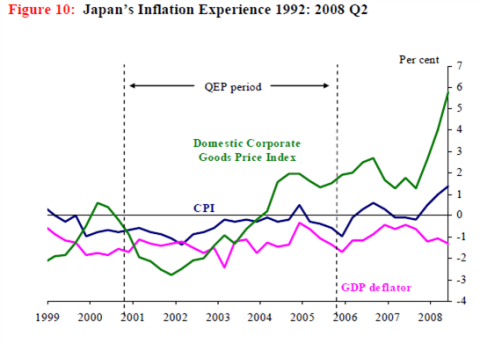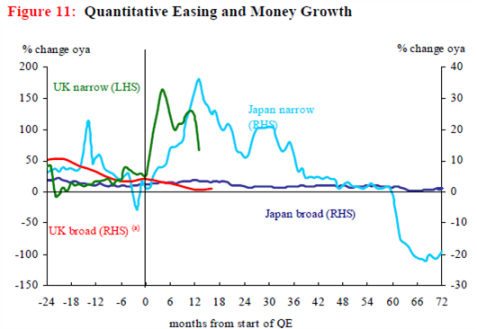Against models: The Good, the Bad, and the Ugly
I got to thinking about macro models while reading a recent Mark Thoma post on the debate between those who defend modern macro models, and those like Krugman and DeLong who wish to move away from highly abstract and unrealistic models (new Keynesian or new classical) and toward something more realistic. I’m not quite sure what that is, but I believe they think it would be something that incorporates insights from people like Keynes and Minsky, and something able to deal realistically with policy options at the zero rate bound.
I know this is going to sound arrogant coming from a pipsqueak at Bentley, but I think both sides are wasting their time. I think we need to move away from macro models, or at least macro models of the type that are the primary subject of dispute. I can think of at least three types of macro models:
1. Models that attempt to explain in very simple terms how key macro variables get determined; IS/LM, AS/AD, money supply and demand, loanable funds and interest rates, etc.
2. Models that try to show the relationship between changes in macro variables like the price level and output, and unobservable changes in the social welfare function (such as the menu cost of inflation, or involuntary unemployment.)
3. Models that attempt to predict movements in the key macro variables, and make conditional predictions based on various settings of monetary and fiscal policy levers.
The first type of model is fine, as a pedagogical device. The second are useful in principle, but in practice we mostly go with the gut. We assume that demand policy probably doesn’t affect the long run rate of real growth, so we try to reduce the amplitude of the business cycle. We also believe that inflation should be predictable. Many economists believe that a stable price level minimizes the welfare cost of inflation, almost all believe the optimal inflation rate in the US is between about minus 2% and plus 4%. We really don’t have any way of showing who’s right, although the answer might depend to some extent how well we deal with the third problem.
The debate is focused on the various structural models of the economy. What happens if we cut the fed funds rate by 1/2%, or increase the budget deficit by $300 billion? We expect answers from our models, and the more Keynesian models generally give slightly different answers than the so-called “freshwater” models.
What I find so odd about this debate is that modern macro theory is often assumed to generate some sort of highly technical structural model featuring rational expectations. But that’s not at all what modern macro theory implies. Modern macro theory implies that policymakers should get the optimal forecast of the policy goal variables, conditional on various policy settings. And modern macro theory suggests that the best way to do that is to create and subsidize futures markets that trade contracts linked to variables being targeted by policymakers. Indeed in the case of monetary policy, money should be convertible into those contracts. And since the price of those contracts presumably has no zero bound, there is no case for fiscal stabilization policy.
You might object that if we don’t build these models, then the markets will lack the sort of information required to make intelligent forecasts. I suppose that’s possible, but I have two problems with that argument. First, there will always be people trying to model the economy, so I’m not worried about that. I’m not even opposed to having the government fund a couple hundred model-builders at the Fed on the grounds that the information it would provide is a public good. What I oppose is the Fed actually using the information from their economic research unit. Let the markets use that information, if they think it’s useful.
Will the markets think it’s useful? Ask yourself this question: In the first 10 days of October 2008, when markets rapidly scaled back NGDP growth forecasts as they received extremely bearish reports regarding AD all over the world, and saw the Fed policy seemingly helpless to arrest the decline, which macro model were markets looking at? Don’t these models usually put in lagged macro data of various sorts, the sort of data that’s reported monthly or quarterly? What sort of data would have caused such bearish sentiment that stock prices fell 23% in 10 days? I suppose you could put in market data measured in real time, but if you are going to do that, why not skip the middleman? Just create a market in the variable you care about, don’t try to infer NGDP growth by putting other real-time market indicators into your model.
So here’s how I see things:
The Good: Create a NGDP market and stop trying to outguess the markets. If you don’t like NGDP, create separate price level and RGDP futures markets, and stabilize a weighted average of the two contracts along the desired growth trajectory.
The Bad: Try to create a structural model of the economy, under the assumption that the public sees the world the way you do. I.e., if you think X causes Y, don’t assume the public believes that X doesn’t cause Y. In other words, use consistent expectations (unfortunately these are misleadingly called rational expectations–it has nothing to do with rationality.) Input data and predict.
The Ugly: Create a model that assumes you are smarter than the public. Also assume that monetary policymakers are really dumb, and don’t know how to do policy at the zero bound even though your model says they can do monetary stimulus at the zero bound. But fiscal policymakers are wise, and free of all political influence. Once all these assumptions are built in, you are free to indulge your wildest left-wing fantasies. All the laws of economics go out the window. No more opportunity costs—build pyramids in the desert, or high speed rail between Tampa and Orlando. Payroll tax cuts cost jobs, but higher minimum wages actually create jobs. Protectionism is also great, especially when directed against oriental people people who live in high-saving cultures.
I suppose that in the debate between the bad and the ugly I should support my freshwater alma mater. But I can’t even get up enough enthusiasm to enter the fray. Once you start thinking in terms of NGDP futures targeting, everything else seems pretty pointless.
PS. Don’t tell me markets are irrational. The point is to stabilize NGDP expectations; according to modern macro theory (Woodford, etc.) unstable expectations of future NGDP causes unstable current NGDP.
Update 5/28/10: Nick Rowe has a related post on this issue. I agree with his commenters that there is an important distinction between unconventional forecasts (aka witchcraft) and making conditional forecasts based on alternative policy choices. But even the latter are inferior to futures markets. After I did this post I realized that I should not have implied that all policy issues revolve around NGDP—I was thinking of demand-side policies. It would be considerably harder to set up prediction markets to evaluate supply-side policies, but nevertheless there is no reason in principle that it couldn’t be done. Interested readers should look at Robin Hanson’s work on “futarchy.”



